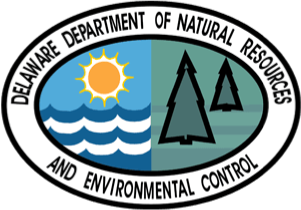What is a CSO, Anyway?
Sometimes sewers overflow into Wilmington waterways when it rains. Lots of older industrial cities have a combined sewer system like Wilmington. A combined sewer system is a system where both sewage and storm water share the same pipe as they flow to the Wilmington wastewater treatment plant and eventually into the Delaware River. A combined sewer overflow (CSO) is when the pipes that carry combined stormwater and sewage cannot handle any more flow and overflow into streams and rivers.
History (or, why does Wilmington have CSOs?)
Wilmington was one of the earliest cities in the state—the population rose quickly in the 1800s peaking in the mid-1900s. Much of the sewer construction began at this time to help control disease. Like other growing cities, the sewers in Wilmington were originally designed to carry storm water and sewage which then emptied directly into the Christina and Brandywine rivers. Streams became very polluted.
Sewage treatment began in Wilmington in 1954 when the sewer system was modified to divert all dry weather sewage and a substantial amount of the combined sewage during storms to the new wastewater treatment plant. Conditions of local streams improved dramatically!
Delaware’s Watersheds
Brandywine Creek Sub-Basin ▲
White Clay Creek Sub-Basin ▲
Red Clay Creek Sub-Basin ▲
Christina River Sub-Basin ▲
City of Wilmington (outlined) ▲
How CSOs Work
Storms can greatly increase flow in the sewer system. When rainfall adds more water than the system can handle the system depends on combined sewer overflows. The overflow flows to an outfall and into streams and rivers. If these overflows did not exist, the combined sewage and storm water would back up into homes through toilets and basements.
Sewage and stormwater flow from multiple sources to the pumping station and then on to the wastewater treatment plant.
Just A Normal Day…
Flow is within the large sewer pipe.
When It Rains It Pours!
Storms greatly increase the volume of flow. When levels in the pipe exceed capacity they flow to an outfall and into streams and rivers.
Where Are They Located?
CSO outfalls are located along the rivers throughout the City. Each location is marked by a sign notifying the public of the CSO. Explore below.
What Can We Do?
- Keep streets and sidewalks free of leaves, litter and debris
- Don’t dump motor oil, antifreeze or other chemicals down the storm drain
- If you see a clogged storm drain in your neighborhood call city maintenance!
- Get involved in neighborhood organizations and cleanups
- Tell others!
What We’ve Done
- Expanded the wastewater treatment facility so it can handle more flow
- Improved operation and maintenance of the sewer system
- Controlled industrial waste entering the sewer system on rainy days through an industrial pretreatment program
- Eliminated overflows of raw sewage on dry days by daily inspections of the CSO pipes and outfalls
- Implemented street cleaning and public education to reduce litter entering the waterways
- Implemented pollution prevention programs including recycling, special cleanups and public education
- Implemented public notification by posting signs at all CSOs, stenciling storm drains, coordinating with civic groups, and distributing fact sheets to the public and media
- Implemented a monitoring program to characterize CSO impacts on water quality and habitat, and to track improvements associated with control efforts
- Installed real time control system in the combined sewer system to help control flows and reduce overflows

Contact Us
Call Center (for non-emergencies)
302-576-3877
Physical Address
City of Wilmington
800 N. French Street
Wilmington DE, 19801

